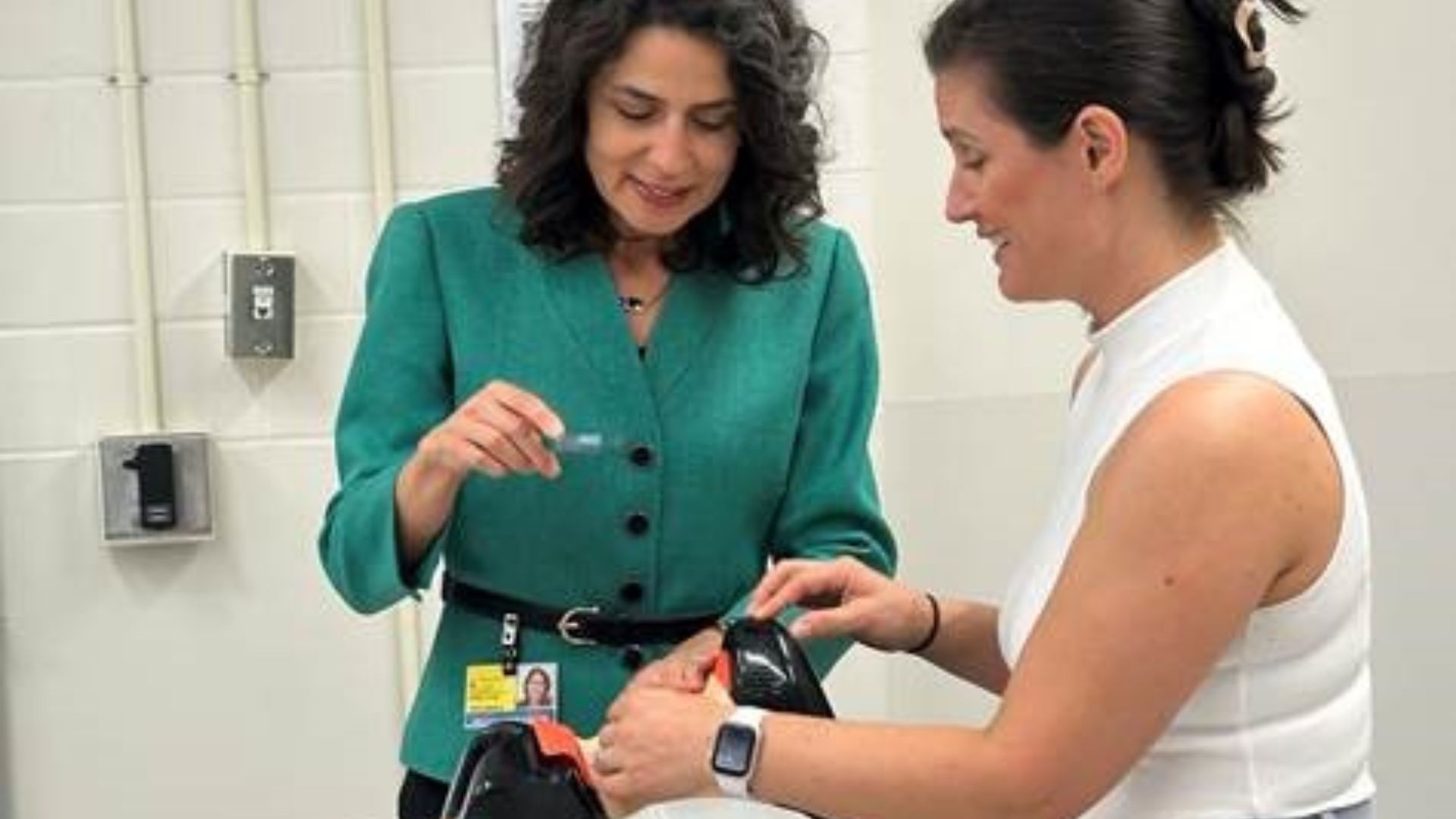It’s rare that anesthesia providers need to perform an emergency cricothyroidotomy, but they have to be prepared when the need arises.
The lifesaving procedure is used when a person is experiencing severe respiratory distress and is unable to be intubated, requiring an emergency surgical airway through the front of the neck.
DNP Nurse Anesthesia track students Alyssa Albert, Alyssa Cartier, Katelyn Reanos, and Tressie Windsor, led by Assistant Professor, Sarah Rollison, DNP CRNA, recently implemented a simulation-based cart to help nurse anesthetists and anesthesiologists at the Johns Hopkins Hospital practice this procedure. The project addresses a critical gap in continuing education for anesthesia providers regarding the emergency cricothyroidotomy procedure. The DNP students developed a mobile, simulation-based training cart that allows providers to practice this life-saving skill using low-fidelity task trainers. While “can’t intubate, can’t ventilate” situations are rare, they are high-stakes, and preparation is crucial.
“The idea behind the cart was to make simulation accessible during work hours in perioperative break areas,” says Windsor. This allows providers to practice without the need for expensive, high-fidelity models.
The initial implementation and reception of the simulation cart were overwhelmingly positive, with many anesthesia providers taking advantage of the opportunity to refresh their skills in a low-pressure environment. The hands-on practice has given providers greater confidence in their ability to perform a cricothyroidotomy if needed, highlighting the importance of regular simulation to maintain proficiency in these procedures.
Recognizing the impact and potential of this project, Christina Miller, MD, and Laeben Lester, MD, of the Johns Hopkins School of Medicine, invited the DNP students to attend a Graduate Medical Education (GME) day at Johns Hopkins Hospital. These events enable policymakers, lobbyists, congressional staff, and corporate representatives to observe graduate medical education in action.
Presenting the simulation cart to people in a variety of sectors, anesthesia providers included, yielded some “happy side effects” for the DNP students beyond the main goal of their project. While policymakers likely won’t be performing an emergency cricothyroidotomy, the DNP students were able to highlight the significance of simulation training and its translation into clinical practice.
“We had them perform their own ‘emergency cricothyrotomy’ with the cart,” says Windsor. “It showed the importance of being able to practice this before needing to perform it on an actual patient.”
In addition to getting this hands-on experience, these policymakers saw firsthand the important work Hopkins Nursing students are undertaking.
“We got to talk with them about not only graduate medical education, but graduate nursing education, DNP programs, and policy for supporting DNP education,” says Dr. Rollison.
Dr. Rollison hopes these conversations will lay the groundwork for more policies that support nursing education and advanced practice nurses.
The DNP students are currently in the data analysis phase of the project. The final project presentation is slated to be done in December 2024, with the goal of submitting a manuscript for publication in Spring 2025.
Seeing the success and positive reception of the simulation cart, the plan now is to expand the project to include critical care physicians and other advanced practice providers working with critically ill patients at the Johns Hopkins Hospital.
